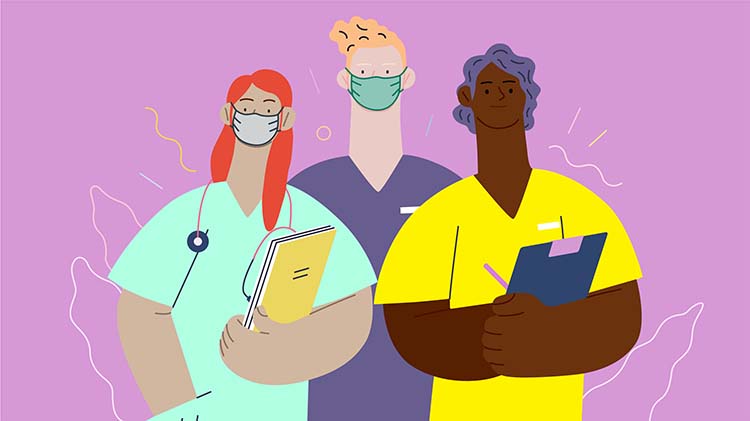Ending Care
24 Jul 2025
Ending the doctor–patient relationship
The decision to terminate a doctor–patient relationship can be a difficult one for a doctor to make, and it often comes later than it perhaps should. By the time Members contact us for advice, they have generally tried a range of strategies to try to preserve the relationship; and the decision to end the doctor–patient relationship is the only option available.
For many doctors, acknowledging they are no longer able, or willing, to look after a patient is not easy and goes against their understanding of their professional obligations as a doctor. It’s important to be aware that it is acceptable and, in certain circumstances, advisable to terminate a therapeutic relationship with a patient. The key issues are to recognise when it is appropriate to do so, and to know how to do it without breaching your legal and professional obligations.
Grounds for ending the doctor–patient relationship
There are a variety of reasons why doctors might decide that a doctor–patient relationship has irrevocably broken down. These include the following:
- Unacceptable patient behaviour – including verbal abuse, threatened or actual violence, harassment and other boundary violations; unacceptable behaviour towards practice staff; or criminal acts by a patient, such as obtaining drugs fraudulently or forging certificates.
- A loss of mutual trust and respect and/or a breakdown in communication – including ongoing non-compliance with management recommendations, or a patient who tries to coerce the doctor to provide medical treatment the doctor disagrees with.
- The behaviour of someone close to the patient that jeopardises ongoing care – such as the parent of a child patient, or carer of a patient without capacity.
- A conflict of interest arises – between you and a patient, or between two patients you currently treat (e.g. a relationship breakdown).
- ‘Heartsink’ patients – not all therapeutic relationships are going to be successful. It’s important to remember that one doctor’s difficult patient is not necessarily another doctor’s difficult patient. If you’re feeling anxious, fearful, angry or emotionally wound up about a particular patient, then you’re not being the best doctor you can be – and care may no longer be provided in the patient’s best interest. Consider if the patient is likely to receive better and more effective care from another doctor.
Legal obligations
There is generally no legal obligation imposed on a doctor to see any patient, except in a genuine emergency. Therefore, there is no legal duty to continue a doctor–patient relationship once it has commenced.
However, it should be noted that some employed doctors may be under a contractual obligation to see certain patients, or the patient may have a right of access to care, e.g. in an Emergency Department setting, or in a public hospital.
Concerns should be raised through the appropriate channels, including the Head of Department or the Director of Medical Services, who may be able to arrange a change of care internally.
It's also important to be aware that health practitioners must not refuse to treat patients based on unlawful discrimination – that is, treating a particular patient (or group of patients) less favourably than they would another patient without a particular characteristic such as disability, race, religion, sex or gender identity.
Professional obligations
Doctors must comply with the Medical Board of Australia’s Good medical practice: a code of conduct for doctors in Australia when ending a doctor–patient relationship.
The Code states:
Ending a professional relationship
In some circumstances, the relationship between a doctor and patient may break down or become compromised (e.g. because of a conflict of interest), and you may need to end it. Good medical practice involves ensuring that the patient is adequately informed of your decision and facilitating arrangements for the continuing care of the patient, including passing on relevant clinical information.1
Therefore, the onus is on you to:
- ensure the patient is informed of your decision
- facilitate the handover of clinical care (taking into account patient safety and any clinically significant risks, such as follow-up of results, etc)
- forward relevant clinical information to the new treating doctor.
This should be carried out in a safe way, taking particular care if the patient is in a vulnerable cohort (e.g. unstable mental health issues, concerns about cognition or capacity, or taking medications that can’t be abruptly stopped).
Ending care at a practice vs individual doctor level
It may be necessary to end the professional relationship with a patient at a practice level, not just with an individual doctor. This might occur when a patient behaves inappropriately or makes threats against you and other staff members. It might also be necessary when the usual treating doctor leaves or retires, and no other doctors in the practice are willing to take over care.
If care is ended at a practice level, the communication will generally come from the practice – whereas an individual doctor ending care will usually communicate the decision to the patient under their own signature.
Generally, if care is ended at a practice level, there is no need for individual doctors to also communicate this. There should be a discussion between the doctor and the practice to confirm at what level care is being ended and how the decision will be communicated to the patient. Communication from the practice can simply come from ‘the practice’ rather than a specific individual, particularly if there is a safety concern.
What about when the patient ends care?
If the patient ends care, then you should consider whether to follow this up in writing. If there is a chance the patient will return, and you have no issues with continuing care, then it may be best to do nothing.
If, however, the consultation ends very badly and you and/or the practice don’t want to risk the patient returning once they have cooled down, it may be appropriate to acknowledge their decision to end care in writing, advise that no further appointments will be offered, and forward a copy of their medical notes to their new treating doctor upon request.
Steps to follow in ending the doctor–patient relationship
Depending on the circumstances, the doctor–patient relationship can be terminated in a face-to-face meeting or consultation with the patient, by phone and/or in writing by the doctor or the practice. Written confirmation of a decision delivered verbally may also be appropriate.
- Inform the patient that the doctor–patient relationship has broken down, and it is in the patient’s best interest to seek ongoing medical care from another doctor.
- This is not the time to ‘get things off your chest’. It can be counter-productive and time consuming to go into too much detail about why you are ending care. Maintaining your own position (e.g. “It is no longer possible for me to provide your ongoing care”) makes it difficult for the patient to argue about the reason care has been ended.
- It is appropriate to seek medico-legal advice about any outstanding issues, and to obtain a review of any written communication you intend to send.
- You may also need to inform the referring practitioner or specialist colleagues involved in the patient’s care, and/or the local hospital, that you are no longer involved in the patient’s care. You are not required to find a new treating doctor for the patient.
- Advise the patient and, if relevant, the referring practitioner(s) of any outstanding clinical issues that require follow-up and a timeframe for doing this. It may be necessary to include relevant clinical results or guidance with the written communication about ending care.
- It may be appropriate to supply a prescription for a small quantity of regular medication to bridge care until the patient can find a new doctor. A month should be sufficient, and the script/s can also be sent to a nominated pharmacy with prescribing limits if needed (e.g. daily pickup).
- The patient can request their notes be transferred to their new treating doctor for continuity of care. This can be requested by the patient, or upon receipt of a signed transfer-of-medical-records form. We recommend you waive your usual fee for the transfer of the records.
- If ending care at an individual level, inform your practice staff that the doctor–patient relationship has been terminated, so that no further appointments are made for the patient with you. Also remember to cancel any reminders in the record-keeping system.
The aim is to communicate the termination of the therapeutic relationship in clear and unambiguous terms, and to ensure you have done everything you can to ensure the patient can receive ongoing care with a new doctor.
Ending care with vulnerable patients requires careful consideration. Addressing any potential risks and ensuring you are meeting your legal and ethical obligations is not only good for the patient, but it may also assist you if the patient makes a regulatory complaint about the breakdown in therapeutic rapport.
We have prepared two sample letters which you can adapt to suit your needs: Ending the Doctor–Patient Relationship: Template Letters
If you find yourself in the difficult situation of having to end care, we encourage you to contact our Medico-legal Advisory Services team for advice and support.
References
- Medical Board of Australia. Good medical practice: a code of conduct for doctors in Australia. medicalboard.gov.au/codes-guidelines-policies/code-of-conduct.aspx
Professional boundaries in healthcare - Part 1
Boundaries with patients present in numerous ways every day and all health practitioners
11 Aug 2025
Understanding Professional Medical Indemnity Insurance
Do you understand the ins and outs of professional medical indemnity insurance?
11 Aug 2025
Professional boundaries in healthcare - Part 2
Boundaries with patients present in numerous ways every day and all health practitioners
11 Aug 2025
Understanding changes to the Fair Work Act
What are the changes to the Fair Work Act and what is my role?
22 Jul 2025







